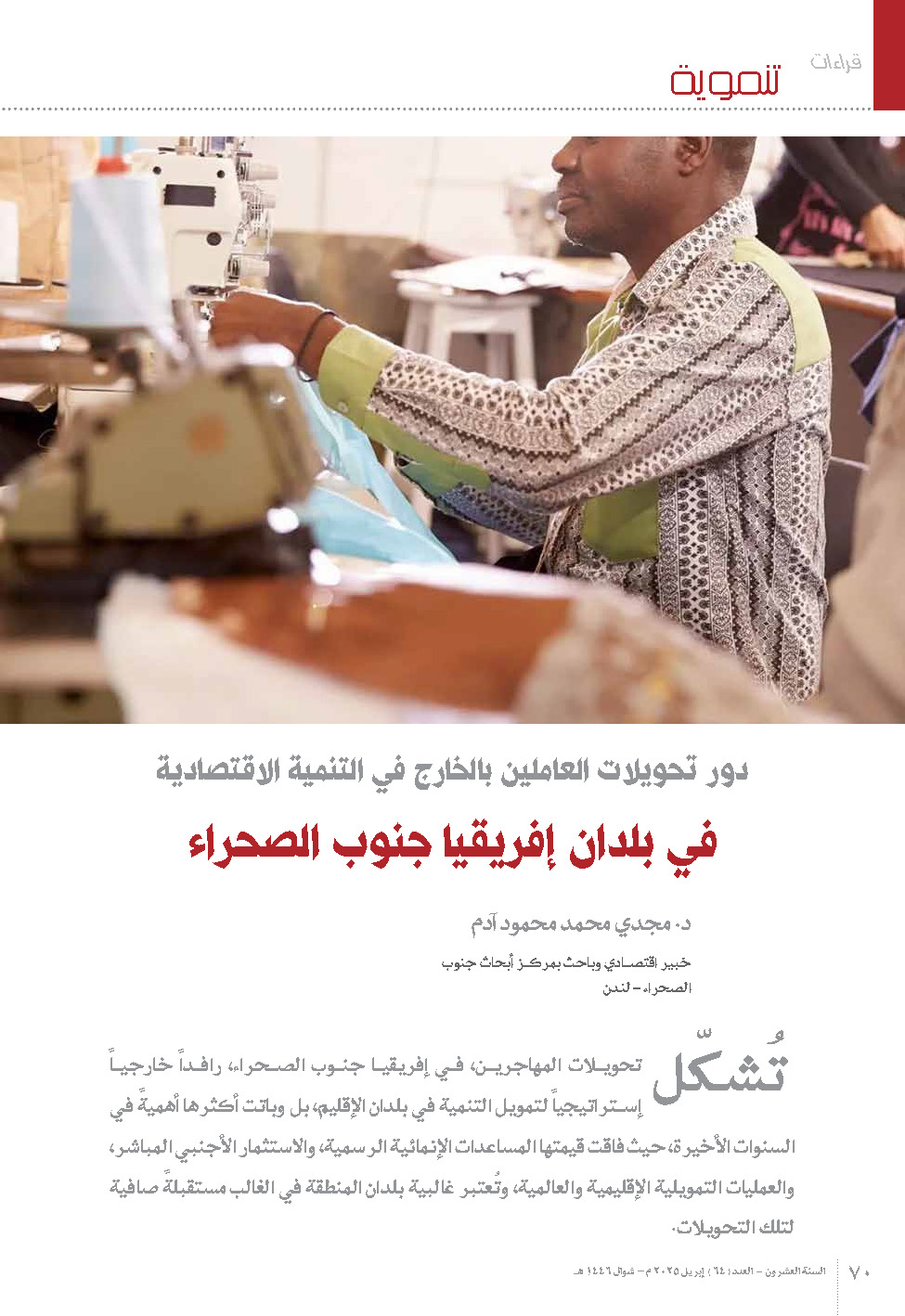Publisher: Qira’at Afriqiyah Magazine
Issue: 64, Aprill 2025
ISSN: 2634-131X
Year : 20
Pages: 70-87
Author: Dr. Magdy Mohamed Mahmoud Adam
Download pdf

Abstract:
In recent years, the role played by remittances from migrants abroad to sub-Saharan Africa in economic and social development has increased, to the point that they have become the most important potential external sources that can be relied upon to finance development. That can be achieved only if their flow is encouraged through official channels, and their management is improved to maximize their benefits, and to overcome the challenges facing this flow, and to avoid weaknesses at the level of policies and institutions that hinder maximizing their benefits. From this standpoint, the study aimed to analyze the development of migrant flows to sub-Saharan Africa, their determinants, and the challenges that reduce their flow, as well as their strategic importance, the role they play at the macro- and micro-economic levels, and the obstacles that prevent their optimal use. The study concluded that migrant flows to the region are steadily increasing, to the point that they have exceeded the flows of foreign direct investment and official development assistance in some countries combined. And that they have a positive impact on economic development in the region. At the macroeconomic level, it works in the opposite direction to the economic role, as it is a stabilizing factor for the economy, and it also has an important role in enhancing financial development and competitiveness, and it works as a source of external financing and a guarantor of creditworthiness. At the microeconomic level, it works as a driver for capital investment and entrepreneurship and contributes significantly to providing the necessary financing for development, as it works as a channel for savings, an alternative financing tool for investment, and facilitates access to education and health care and reduces poverty. However, the high costs of transferring it, and the weakness of institutions, policies, and the economic environment, hinder its optimal exploitation, and may even create negative effects on its flow. Accordingly, the study recommended the necessity of adopting appropriate mechanisms that prevent the encouragement of its flow, and its behavior through informal channels, and overcoming the weaknesses in the institutions and policies responsible for directing it, and developing the necessary plans to predict and employ it, and integrate migrants into the development process.
